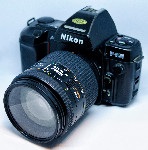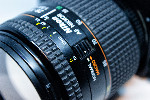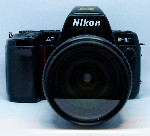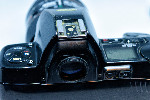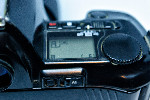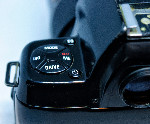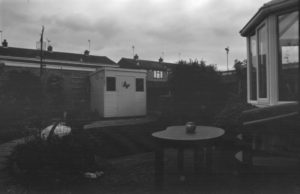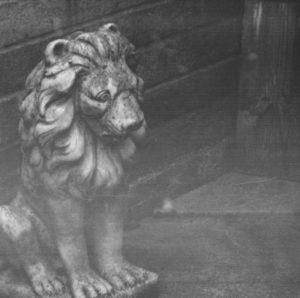Sticking with the big boy cameras, here is the Nikon F-801 and some more tricky films.
The other side
Nikon F-801
Camera: £10.00
Nikon AF 28-105
Lens: £27.79
Postage: £9.49
Total: £47.28
More of the PictUre
Again we are talking full-frame with all the trimmings. Nikon use the terms FX to indicate their full-frame lenses and DX for the APS-C lenses. The 28-105 FX lens I got for this camera is a very nice, versatile lens which can do close-up/macro as well as a reasonable zoom. It’s very heavy, which gives it a solid feel, but it can be a bit much to carry around and would feel unbalanced on a lighter camera, but all that lovely glass makes up for it. Fortunately the F-801 is almost as solid and metal which does help with the balance but does increase the weight still more.
All the bells and some of the whistles
It has auto-everything with the option to manual-everything as you would expect. As an older camera the controls are a little less familiar, usually requiring a few button combos to seleect every option but everything is there on the little LCD display and replicated when looking through the viewfinder. It doesn’t have as many mode settings or electronic assists as the newer Canon, but I often find them a bit distracting if I’m honest. On both cameras I would use the standard P (programme) mode to get an idea what the camera thought the exposure and shutter speed should be, then used either the A/Av (Aperture [value]) or S/Tv (Shutter/Time value) priority modes to tweak it depending if I wanted more light, a certain shutter speed or a particular depth of field.
Again I had an inkling that this camera would be something special, so I picked out a couple of films to really give it a workout.
Fuji Colour
Fuji Provia
Cost: £0.99
Postage: £4.50
Expired: new film
ISO: 100
Format/Type: Colour slide
Exposures: 36
Processing: £4.89
Full Total: £11.28
Cost per shot: £0.31
My Rating: 9
I’m really pleased with the results, great colours and nice detail. It’s fast enough that you can get good hand-held pictures on a sunny day, but not so fast as to be too grainy. Most of the shots would have made dull black and white images, but the strong colour makes them work really well. Slide film uses different chemicals which I don’t currently have, and the film itself costs a little more, but results like this are hard to argue with. When you have a good camera and film combo it’s worth doing it properly.
Super Slow Motion
Heisenberg BW7
(Orwo)
Cost: £5.95
Postage: £6.07
Expired: 1996
ISO: 7
Format/Type: BW negative
Exposures: 24
Processing: £0.66
Full Total: £12.68
Cost per shot: £0.53
My Rating: 7
The results are better than I was expecting, so while I’d would like to, I’m unlikely to be able to get hold of this film again – it’s another Kaba Otto one like the BW# films in the two previous posts. However I can still get fresh Orwo film that it was based on and it’s something I’d like to try out. The constrast is nice and there is good detail, but the film was delicate and picked up a bit of damage just from going through the camera, apparently this is not uncommon in film originally design for movie use. I’ll certainly try Orwo again, although the modern version is rated at much higher speeds. It was a fun experiment to use such a slow film, but not likely to be one I’m able to repeat unless I can pick up some more specialist film.
